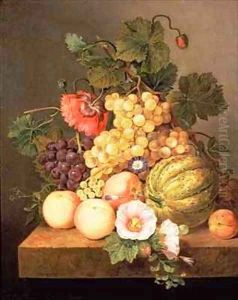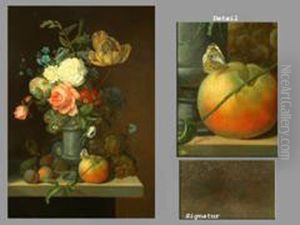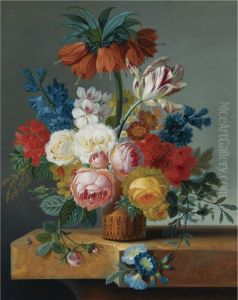Johannes Cornelis Bruyn Paintings
Johannes Cornelis (Kees) Bruyn was a Dutch painter and graphic artist born on October 17, 1914, in Weesp, Netherlands. Not to be confused with the earlier Dutch painter Johannes Cornelisz Verspronck, Bruyn was a 20th-century artist whose work was influenced by the changing artistic movements of his time, including elements of Expressionism and perhaps Abstract Expressionism.
Kees Bruyn was educated at the Rijksacademie van Beeldende Kunsten (State Academy of Fine Arts) in Amsterdam, where he honed his skills in painting and graphic art. Throughout his career, Bruyn was known for his versatility, working in various media including oil painting, watercolor, and printmaking.
Bruyn's artistic journey was marked by his exploration of color and form, often focusing on landscapes, cityscapes, and still lifes. He had a distinct ability to capture the essence of his subjects, imbuing his works with a sense of depth and atmosphere. Despite not being widely known internationally, within the Netherlands, he contributed to the local art scene and participated in various exhibitions throughout his career.
During World War II, the Netherlands was occupied by Nazi Germany, which had a profound impact on Dutch cultural life and artists. While it is not clear how the war directly affected Bruyn's work, many artists of the time faced restrictions and challenges, and some participated in the resistance through their art or actions.
After the war, Bruyn continued to develop his artistic style, which remained relatively figurative despite the prevailing trends of abstraction in the post-war era. He exhibited his work in several Dutch galleries and was part of the artists' community that sought to revive the cultural landscape of the Netherlands after the turmoil of the war.
Kees Bruyn's contributions to Dutch art were modest yet significant within his local context. His dedication to his craft and his ability to adapt to the shifting artistic moods of the 20th century are notable aspects of his career. He passed away on December 14, 1987, leaving behind a body of work that captures a slice of Dutch artistic heritage from a period of great change and resilience.


